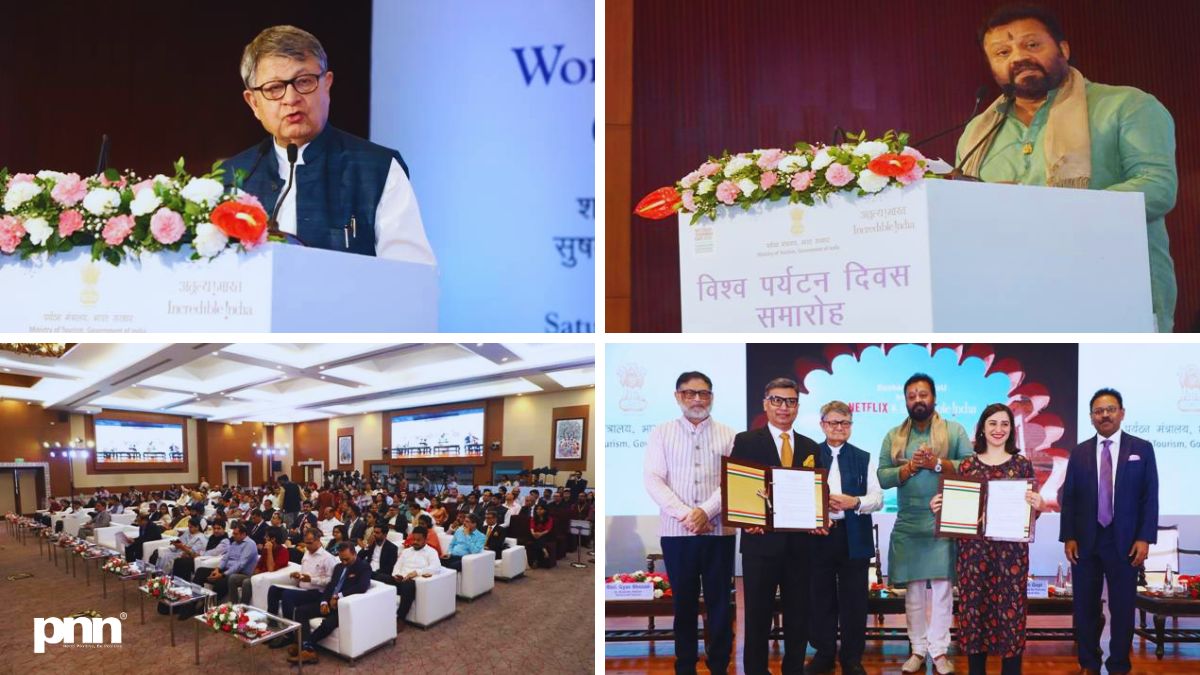New Delhi [India], September 27: India didn’t just mark World Tourism Day 2025; it flexed. From global tie-ups with Netflix to digital overhauls, the Ministry of Tourism put sustainability front and center, aiming straight for Viksit Bharat 2047.
Tourism as a Power Play
World Tourism Day 2025 wasn’t a token ribbon-cutting. Delhi’s event, themed “Tourism and Sustainable Transformation”, brought in heavy hitters across government, academia, and industry. The clear message: India wants to play offense, not defense, in global tourism.
Chief Guest Shri Suman Bery, Vice Chairperson of NITI Aayog, didn’t mince words. “Tourism is not just about leisure; it is a powerful instrument for economic transformation, environmental stewardship, and social inclusion.” Translation: stop treating tourism like a hobby. It’s business, policy, and soft power rolled into one.
Sustainability as Non-Negotiable
Bery drove home the point that India cannot afford “greenwashing.” Sustainability can’t sit in the margins of policy; it has to be the core strategy. That means convergence: transport, urban development, digital tech, and infrastructure must move in sync.
If India nails seamless connectivity, road, rail, air, and waterways, it can deflate the pressure on overcrowded sites like Jaipur and Goa, while lighting up hidden gems from the Northeast valleys to Ladakh. This isn’t just tourism; it’s regional development with style.
Minister’s Pitch: From Schemes to Groundwork
Minister of State for Tourism, Petroleum & Natural Gas, Shri Suresh Gopi, turned up the volume. He spotlighted Swadesh Darshan 2.0 and PRASHAD as India’s eco-tourism engines. Add to that revamped digital platforms and a push for village tourism, and the message was clear: India is betting big on inclusive, tech-driven travel.
Connectivity was his drumbeat. Airports, rail, highways, and even inland waterways are being redesigned to make travel seamless. Initiatives like UDAN aren’t just about cheap tickets; they’re the arteries feeding new tourist circuits. Better last-mile links mean no more “great idea, bad logistics.”
Global Partnerships with Local Punch
This wasn’t just about speeches. The Ministry locked in MoUs with Netflix, Atithi Foundation, and major OTAs (Online Travel Agencies).
- Netflix tie-up: Expect Indian destinations on global screens, wrapped in cinematic storytelling. Soft power, meet marketing.
- Atithi Foundation & OTAs: These partnerships will drive data-backed tourism policy, post-travel feedback loops, and capacity building for states. In short: fewer shots in the dark, more precision play.
Digital Reinvention: PMIS and Data
India’s tourism machine isn’t staying analogue. The Ministry launched the Project Management Information System (PMIS), a real-time digital tracker for infrastructure projects. Think of it as a control tower, transparent, efficient, and unflinchingly data-driven.
The 66th edition of the India Tourism Data Compendium also dropped, confirming India’s climb: ranked 20th globally for international tourist arrivals. Domestic travel is booming too, fueling jobs and GDP.
And for homestay owners? A new booklet, “Guide to MUDRA Loans for Homestays,” demystifies loan applications via the Jan Samarth portal. A rare moment where government paperwork may actually feel user-friendly.
Case Studies, Tech, and Big Spectacle
Tourism is about experiences, and India is showing off. High-level panels dissected connectivity with voices from aviation, shipping, rail, and road ministries. Case studies like Mahakumbh 2025 and the Statue of Unity showed scale and execution.
Tech wasn’t sidelined either. Discussions on AI, AR/VR, and digital twins weren’t just buzzwords; they’re shaping how India plans destinations and curates visitor experiences. Imagine previewing a temple town in VR before you even book the ticket. That’s not sci-fi anymore.
India’s Tourism Ambition: Viksit Bharat 2047
The elephant in the room was ambition. The celebration wasn’t just about 2025; it was about 2047. By India’s centenary of independence, the tourism sector is being cast as green, inclusive, and unapologetically future-ready.
The Vice Chairperson of NITI Aayog summed it up: communities must move from being “participants” to “beneficiaries.” In blunt terms, local people must win from tourism, not just watch from the sidelines.
Why World Tourism Day 2025 Matters for India
Here’s the kicker: tourism isn’t just vacations and Instagram reels. It’s jobs, foreign exchange, regional uplift, and cultural branding. India’s vision to climb from 20th place globally isn’t vanity; it’s economics with cultural swagger.
For a country where every state feels like a different country, tourism is India’s most underrated strategic weapon. Sustainable tourism could be the bridge between preserving heritage and building highways.

